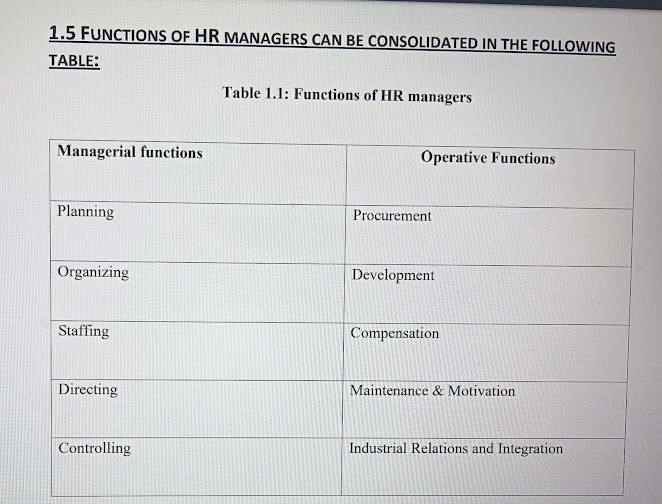Human Resource Management (HRM) - Revision Notes
1. Introduction to Human Resource Management (HRM)
Human Resource is one of the most crucial
resources in an organization.
HR helps create competitive advantages in the market.
Managing HR is challenging as it is the only resource capable of reasoning,
questioning decisions, and allocating tasks.
Each employee brings a unique personality, set of needs, and ambitions, making
HR management critical.
1.1 Defining Human Resource Management (HRM)
• Pande and Basak: HRM is a strategic and
coherent approach to managing an organization’s most valuable asset—its people.
• Armstrong: HRM is a strategic approach to managing people who are crucial for
achieving organizational goals.
• Dessler: HRM involves acquiring, training, appraising, compensating
employees, and addressing labor relations, health, safety, and fairness.
• Glueck: HRM focuses on the effective use of people to achieve both
organizational and individual goals.
1.2 Features of HRM
• Appreciating Asset: HR is the only asset
that appreciates over time, unlike machines or technology that depreciate.
• Output Greater Than Input: The way people are treated and the HR policies
designed determine the output, which eventually exceeds input costs.
• Utility Value: HR effectively utilizes physical assets (e.g., buildings,
machinery). Without skilled people, technological advances cannot be fully
utilized.
1.3 Importance of Vision and Mission Statements
• Mission Statements often emphasize
employees as integral to success, e.g., Aditya Birla Group’s mission: 'Deliver
superior value to customers, shareholders, employees, and society.'
• ICICI Bank’s mission: 'Develop into an organization empowered by talented
individuals.'
• Significance: Mission statements underline the importance of skilled
employees who drive the success of the organization.
1.4 Scope, Objectives, and Functions of HRM
• Strategic Importance: HRM aligns with all
departments to achieve common goals. It is as critical as finance, marketing,
and IT in the organization.
• Scope and Objectives:
- Manpower Inventory: Forecasting,
planning, and managing workforce needs.
- Resourcing: Recruitment, selection,
and hiring.
- Induction & Orientation:
Socializing and integrating new employees.
- Training & Development: Enhancing
skills and productivity.
- Performance Management: Evaluating
jobs and performance, managing rewards.
- Compensation: Managing monetary and
non-monetary compensation.
- Employee Relations: Handling
grievances, ensuring workers' participation, and addressing health and safety.
- Employee Engagement: Fostering a
positive work environment and employee connection to work.
- Talent Management: Attracting,
developing, and retaining skilled individuals.


Comments
Post a Comment